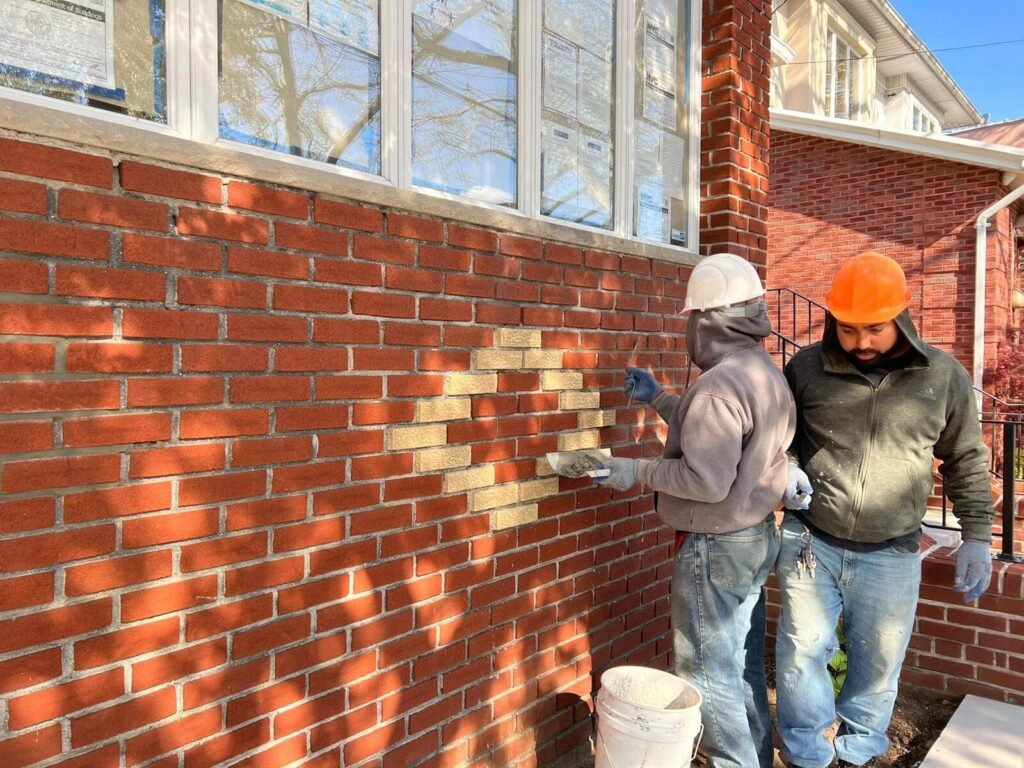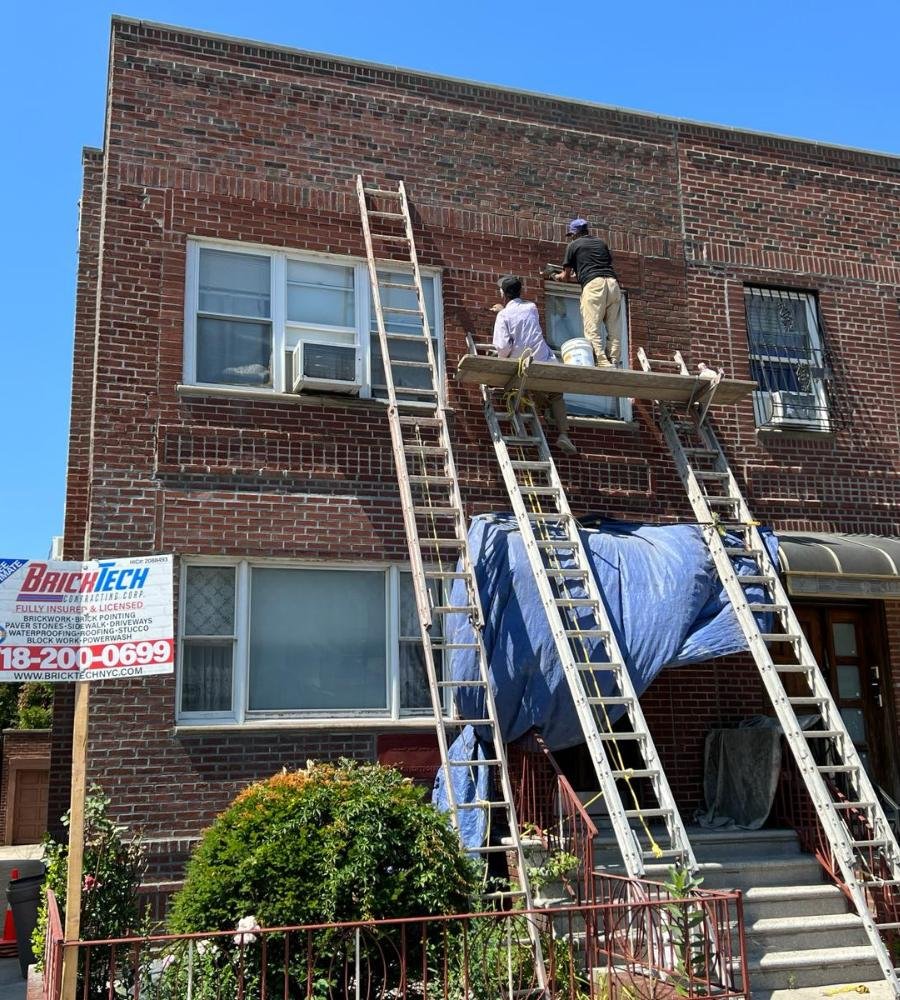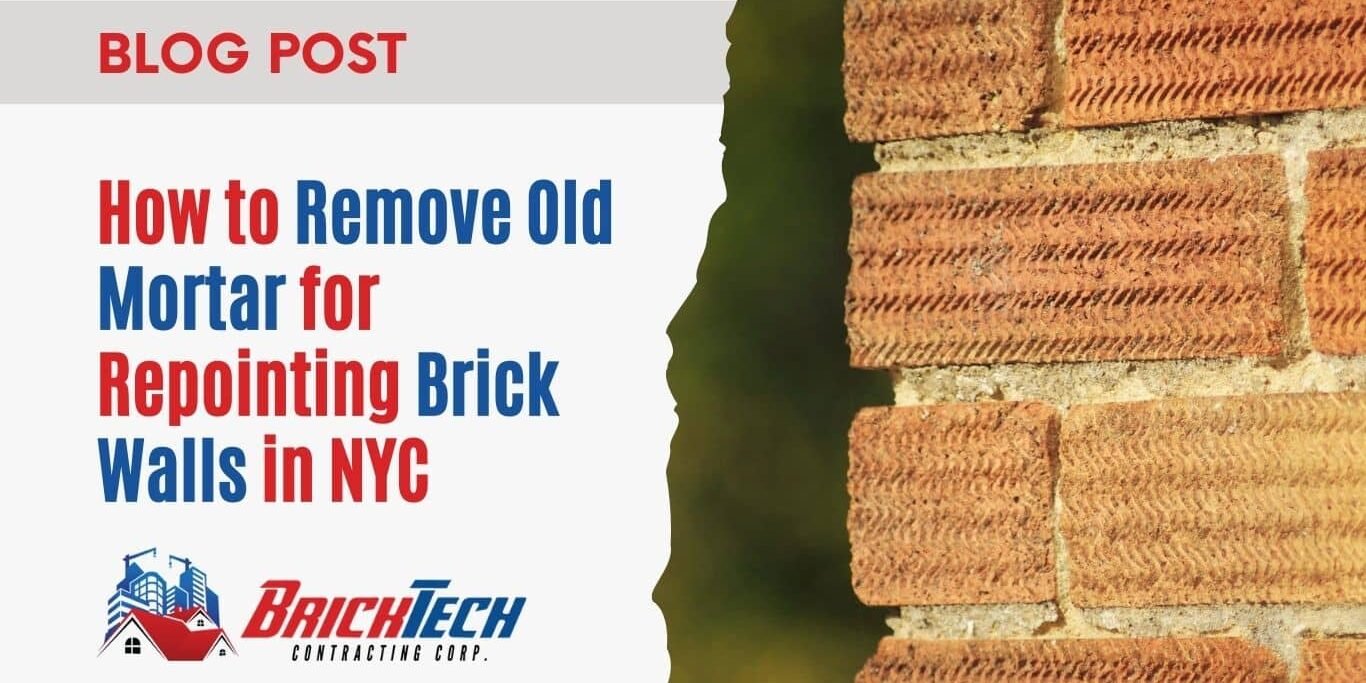When old brick walls start showing cracks, gaps, or crumbling joints, repointing becomes essential. Repointing means removing the damaged mortar between bricks and replacing it with fresh mortar to restore strength, protect against water damage, and extend the life of your wall.
But before you can repoint, you need to remove the old mortar properly. Doing this step carefully is the key to a strong, long-lasting repair.
This guide will walk you through:
- Why mortar removal is important
- Tools you’ll need
- A step-by-step process
- Common mistakes to avoid
- When to call a professional
What Is Mortar and Why Remove It?
Mortar is the mixture of sand, cement, and water that binds bricks together. Over time, mortar weakens and may:
- Crack or crumble
- Fall out of the joints
- Allow water to seep into the wall
If damaged mortar is not removed, new mortar will not bond properly. Worse, water intrusion can cause brick erosion and structural issues. That’s why removing old mortar is always the first step before repointing.

Tools You’ll Need
Gathering the right tools before starting makes the job smoother and safer:
- Hammer and Chisel – Best for small, delicate areas.
- Angle Grinder – Cuts through mortar quickly on larger sections.
- Mortar Raking Tool – Designed for scraping out mortar without damaging bricks.
- Wire Brush – Cleans away dust and debris from joints.
- Safety Gear – Gloves, goggles, and a dust mask are essential for protection.
Step-by-Step Process for Mortar Removal
Follow these steps carefully to remove old mortar without damaging your bricks.
Step 1: Prepare the Area
- Cover nearby plants, furniture, or windows to protect them from dust.
- Wear gloves, goggles, and a mask for safety.
Step 2: Remove Loose Mortar
- Start with a hammer and chisel.
- Hold the chisel at a low angle and tap lightly with the hammer.
- Remove cracked or loose mortar before moving to harder areas.
Step 3: Cut the Mortar Joints
- Use an angle grinder to cut about ½–¾ inch deep into the mortar.
- Move slowly and avoid hitting the brick faces.
- Focus only on the mortar lines.
Step 4: Remove Remaining Mortar
- Switch back to a chisel or mortar raking tool.
- Scrape out the remaining mortar cleanly.
- Be gentle around weak bricks to avoid damage.
Step 5: Clean the Joints
- Use a wire brush to sweep away fine dust and debris.
- Wipe joints with a damp cloth or sponge.
- Let the wall dry completely before applying new mortar.

Tips for Safe and Effective Mortar Removal
- Be patient – rushing increases the risk of brick damage.
- Work in small sections – this keeps the process manageable.
- Check brick condition – fragile bricks need extra care.
- Always wear safety gear – mortar dust can irritate eyes and lungs.
- Use the right tools – each tool has its strengths; choose wisely.
Common Mistakes to Avoid
Even simple mistakes can cause long-term problems. Avoid these:
- Removing too much mortar – don’t cut deeper than needed.
- Damaging bricks – avoid striking brick faces with tools.
- Skipping safety gear – always protect your eyes and lungs.
- Not cleaning properly – leftover dust prevents new mortar from bonding.
Tool Comparison for Mortar Removal
| Tool | Best For | Advantages | Disadvantages |
|---|---|---|---|
| Hammer & Chisel | Small jobs, delicate areas | Low cost, precise | Slow, requires effort |
| Angle Grinder | Large areas, deep cuts | Fast, powerful | Risk of brick damage, noisy |
| Mortar Raking Tool | Joint clean-up, precision work | Brick-friendly, safe | Slower, limited depth |
| Wire Brush | Cleaning after removal | Removes dust easily | Does not remove mortar |
When to Call a Professional
Mortar removal can be labor-intensive and risky if not done correctly. If:
- The wall is large
- Bricks are weak or historic
- You lack the right tools
…it’s best to hire a professional repointing contractor. Experts have the skill and equipment to ensure the job is done safely and effectively, saving you time and costly repairs.
Frequently Asked Questions
What is the best tool to remove old mortar safely?
A hammer and chisel for precision, or an angle grinder for speed, are most commonly used.
How deep should mortar be removed for repointing?
At least ½ to ¾ inch deep for a strong bond.
Can mortar be removed without damaging bricks?
Yes, if you work carefully and use the correct tools.
How long does it take to remove mortar?
Several hours, depending on wall size and mortar condition.
Should I hire professionals for repointing?
For large or delicate projects, hiring professionals ensures better results and prevents damage.
Conclusion
Proper mortar removal is the foundation of successful repointing. By using the right tools, following a careful process, and avoiding common mistakes, you can prepare your brick walls for a durable, weather-resistant finish.
If you live in New York City and want expert help, Brick Tech Contracting Corp offers reliable brick pointing services with care and precision.
With the right approach, your brick walls can stay strong, beautiful, and long-lasting.








